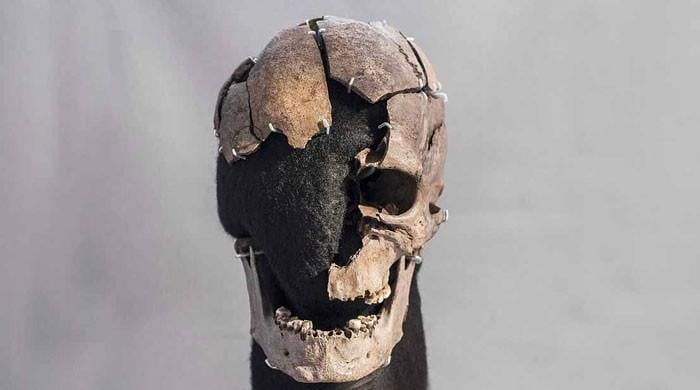'Vittrup Man' traveled from Norway to the Funnel Beaker society in northern Denmark sometime between 3100 and 3300 BC
A mysterious ancient skeleton known as the “Vittrup Man” was discovered in a peat bog in northwestern Denmark in 1915.
Now, more than a century later, scholars have finally pieced together the strange events of his life, as well as his brutal death, the The Miami Herald reported.
The remains, which include an ankle bone, a shinbone and a portion of the skull, recently underwent in-depth genetic analysis, according to a study published Feb. 14 in the journal Public Library of Science (PLOS) One.
Through this study, researchers determined that the man was likely short, with a dark complexion and blue eyes.
He must have been in his early 30s when he died sometime between 3100 and 3300 BC.
Researchers say he may have been born somewhere near Norway or Sweden. He appears to have lived as a hunter-gatherer and fisherman, feeding on marine species such as seals and whales, before changing to an agricultural lifestyle, perhaps after moving to the Funnel Beaker society that inhabited northern Denmark.
According to experts, this civilization was “well established” at that time, characterized by “cultural flourishing” and economic luxury.
The reason for this move is unknown; However, what is known is that he did not survive here for long.
He was brutally murdered after a few years of living in the rural Funnel Beaker culture. A weapon, perhaps a wooden club found near his remains, was used to inflict at least eight blows to the head, shattering his skull, investigators said.
Much of his body, including his limbs and torso, probably decomposed in the swamp over time, although they may have been deposited in the swamp in parts.
Researchers stated that human sacrifice, once a common practice in the swamps of Denmark, was most likely the cause of his death.
A “dubious honor” involving human sacrifice was often imposed on outsiders, including individuals of high social standing.
The fragmented skull of the “Vittrup Man” is on display at the Vendsyssel Historical Museum in Denmark.












